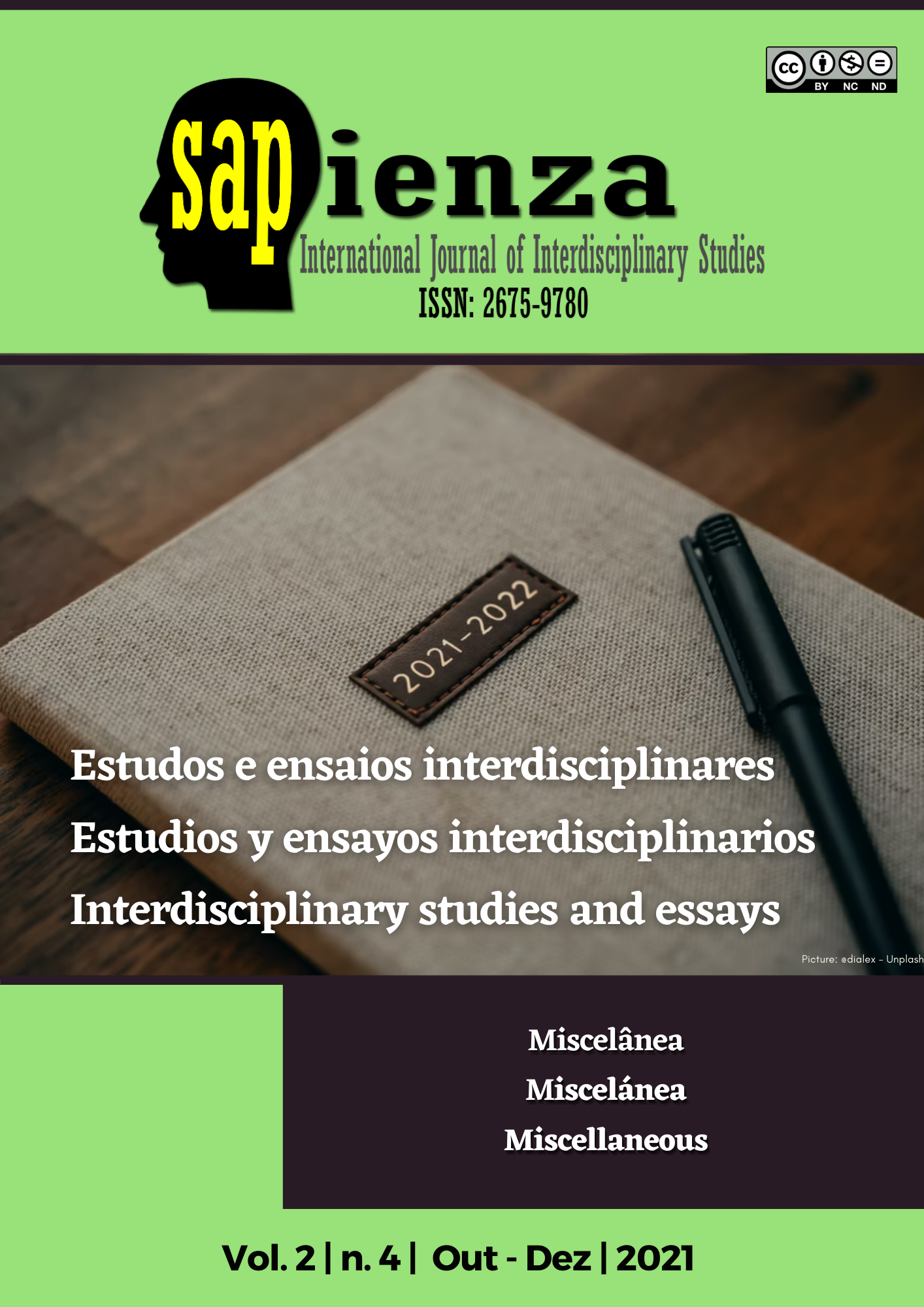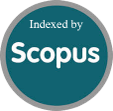Chemical properties of complex aluminum ions
DOI:
https://doi.org/10.51798/sijis.v2i4.143Keywords:
Íons complexos. Solubilidade. Reação exotérmica. Alumínio. Propriedades químicasAbstract
The objective of this research work was to study the synthesis of metallic salts and to analyze their properties. For this purpose, tests were carried out using basic and acid solutions. These tests allowed to identify that the reaction of aluminum in the presence of sulfuric acid is an exothermic reaction whose first stage is the formation of the tetrahydroxoaluminate (III) ion complex, a process in which a significant amount of heat is released from the system and a large amount of hydrogen gas for the oxidation of aluminum, a second stage in which sulfuric acid was added to neutralize the basicity of the solution transforming the complex into disulfate-aluminate (III), Then a third stage consisted in subjecting the solution in an ice bath to decrease the solubility of the complex and the formation of whitish crystals and finally the removal of excess crystals by washing with ethanol, these tests revealed the importance of excess sulfuric acid in the stabilization of the aluminate ion and the ease of the complex ion to bind to water molecules, thus determining important properties of the reaction as the type, orientation, solubility and the intermediates affected by the metal catalysis.
References
Abdallah, M., Sobhi, M., & Al-Tass, H. M. (2016). Corrosion inhibition of aluminum in hydrochloric acid by pyrazinamide derivatives. Journal of Molecular Liquids, 223, 1143–1150. https://doi.org/10.1016/j.molliq.2016.09.006
Anjum, S., Gurave, P., Badiger, M. V., Torris, A., Tiwari, N., & Gupta, B. (2017). Design and development of trivalent aluminum ions induced self-healing polyacrylic acid novel hydrogels. Polymer, 126, 196–205. https://doi.org/10.1016/j.polymer.2017.08.045
Belin-Ferré, E. (2009). Properties and Applications of Complex Intermetallics (Vol. 2). WORLD SCIENTIFIC. https://doi.org/10.1142/7228
Ben Jrad, A., Kanso, H., Raviglione, D., Noguer, T., Inguimbert, N., & Calas-Blanchard, C. (2019). Salen/salan metallic complexes as redox labels for electrochemical aptasensors. Chemical Communications, 55(85), 12821–12824. https://doi.org/10.1039/c9cc07575e
Boinovich, L. B., Modin, E. B., Sayfutdinova, A. R., Emelyanenko, K. A., Vasiliev, A. L., & Emelyanenko, A. M. (2017). Combination of Functional Nanoengineering and Nanosecond Laser Texturing for Design of Superhydrophobic Aluminum Alloy with Exceptional Mechanical and Chemical Properties. ACS Nano, 11(10), 10113–10123. https://doi.org/10.1021/acsnano.7b04634
Chaudhry, M. T., Akine, S., & Maclachlan, M. J. (2021). Contemporary macrocycles for discrete polymetallic complexes: Precise control over structure and function. In Chemical Society Reviews (Vol. 50, Issue 19, pp. 10713–10732). Royal Society of Chemistry. https://doi.org/10.1039/d1cs00225b
Chen, Z., Xu, H., Gao, Y., Wang, X., & Yang, T. (2019). Site-preference, electronic, magnetic, and half-metal properties of full-heusler sc2vge and a discussion on the uniform strain and tetragonal deformation effects. Crystals, 9(9). https://doi.org/10.3390/cryst9090445
Hemaida, H. A. E., Ali, A. E. D., & Sadek, S. M. M. (2008). Potential anti-fouling agents: Metal complexes of 3-(2-furylidene) hydrazino-5,6-diphenyl-1,2,4-triazine. Pigment and Resin Technology, 37(4), 243–249. https://doi.org/10.1108/03699420810887889
Jiang, J., Li, H., Huang, J., Li, K., Zeng, J., Yang, Y., Li, J., Wang, Y., Wang, J., & Zhao, J. (2017). Investigation of the Reversible Intercalation/Deintercalation of Al into the Novel Li3VO4@C Microsphere Composite Cathode Material for Aluminum-Ion Batteries. ACS Applied Materials and Interfaces, 9(34), 28486–28494. https://doi.org/10.1021/acsami.7b07503
Legg, B. A., Baer, M. D., Chun, J., Schenter, G. K., Huang, S., Zhang, Y., Min, Y., Mundy, C. J., & De Yoreo, J. J. (2020). Visualization of Aluminum Ions at the Mica Water Interface Links Hydrolysis State-to-Surface Potential and Particle Adhesion. Journal of the American Chemical Society, 142(13), 6093–6102. https://doi.org/10.1021/jacs.9b12530
Li, J., Gao, Y., Gao, Y., Chen, Z., Wang, R., & Xu, Z. (2020). Study on aluminum removal through 5-sulfosalicylic acid targeting complexing and D290 resin adsorption. Minerals Engineering, 147, 106175. https://doi.org/10.1016/j.mineng.2019.106175
Mazzeo, F., Brunner, F., Prescimone, A., Constable, E. C., & Housecroft, C. E. (2020). Intra-cation versus inter-cation π-contacts in [Cu(P^P)(N^N)][PF6] complexes. Crystals, 10(1). https://doi.org/10.3390/cryst10010001
Mondal, I., & Chattopadhyay, S. (2019). Development of multi-metallic complexes using metal-salen complexes as building blocks. Journal of Coordination Chemistry, 72(19–21), 3183–3209. https://doi.org/10.1080/00958972.2019.1695048
Park, Y., Lee, D., Kim, J., Lee, G., & Tak, Y. (2020). Fast charging with high capacity for aluminum rechargeable batteries using organic additive in an ionic liquid electrolyte. Physical Chemistry Chemical Physics, 22(47), 27525–27528. https://doi.org/10.1039/d0cp05050d
Paterno, D., Rock, E., Forbes, A., Iqbal, R., Mohammad, N., & Suarez, S. (2020). Aluminum ions speciation and transport in acidic deep eutectic AlCl3 amide electrolytes. Journal of Molecular Liquids, 319, 114118. https://doi.org/10.1016/j.molliq.2020.114118
Ramasamy, H. V., Kaliyappan, K., Thangavel, R., Seong, W. M., Kang, K., Chen, Z., & Lee, Y. S. (2017). Efficient Method of Designing Stable Layered Cathode Material for Sodium Ion Batteries Using Aluminum Doping. Journal of Physical Chemistry Letters, 8(20), 5021–5030. https://doi.org/10.1021/acs.jpclett.7b02012
Tian, J., Yan, X., Yang, H., & Tian, F. (2015). A novel turn-on Schiff-base fluorescent sensor for aluminum(III) ions in living cells. RSC Advances, 5(129), 107012–107019. https://doi.org/10.1039/c5ra17557g
Wang, Y., Li, J., Gao, Y., Yang, Y., Gao, Y., & Xu, Z. (2020). Removal of aluminum from rare-earth leaching solutions via a complexation-precipitation process. Hydrometallurgy, 191, 105220. https://doi.org/10.1016/j.hydromet.2019.105220
Xie, H., Wu, Y., Huang, J., Zeng, F., Wu, H., Xia, X., Yu, C., & Wu, S. (2016). A ratiometric fluorescent probe for aluminum ions based-on monomer/excimer conversion and its applications to real samples. Talanta, 151, 8–13. https://doi.org/10.1016/j.talanta.2016.01.015
Xie, J. Y., Li, C. Y., Li, Y. F., Fu, Y. J., Nie, S. X., & Tan, H. Y. (2017). A near-infrared chemosensor for determination of trivalent aluminum ions in living cells and tissues. Dyes and Pigments, 136, 817–824. https://doi.org/10.1016/j.dyepig.2016.09.046
Yang, M. H., Chen, S. C., Lin, Y. F., Lee, Y. C., Huang, M. Y., Chen, K. C., Wu, H. Y., Lin, P. C., Gozes, I., & Tyan, Y. C. (2019). Reduction of aluminum ion neurotoxicity through a small peptide application – NAP treatment of Alzheimer’s disease. Journal of Food and Drug Analysis, 27(2), 551–564. https://doi.org/10.1016/j.jfda.2018.11.009
Yuan, Y. J., Yu, Z. T., Chen, D. Q., & Zou, Z. G. (2017). Metal-complex chromophores for solar hydrogen generation. Chemical Society Reviews, 46(3), 603–631. https://doi.org/10.1039/c6cs00436a
Zhang, Y., Liu, S., Ji, Y., Ma, J., & Yu, H. (2018). Emerging Nonaqueous Aluminum-Ion Batteries: Challenges, Status, and Perspectives. Advanced Materials, 30(38), 1706310. https://doi.org/10.1002/adma.201706310
Downloads
Published
How to Cite
Issue
Section
License
Copyright (c) 2021 Dennis Renato Manzano Vela

This work is licensed under a Creative Commons Attribution-NonCommercial-NoDerivatives 4.0 International License.




